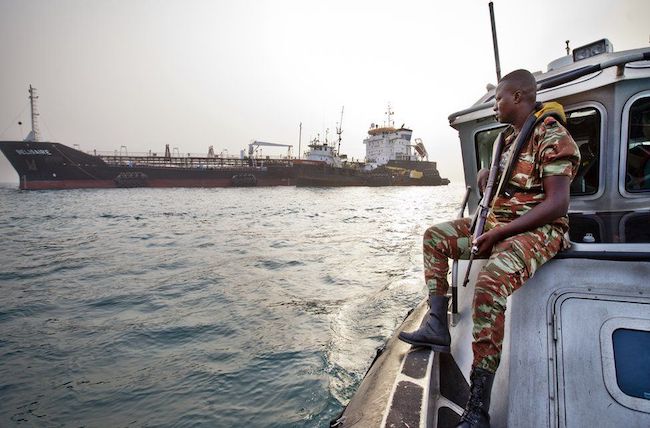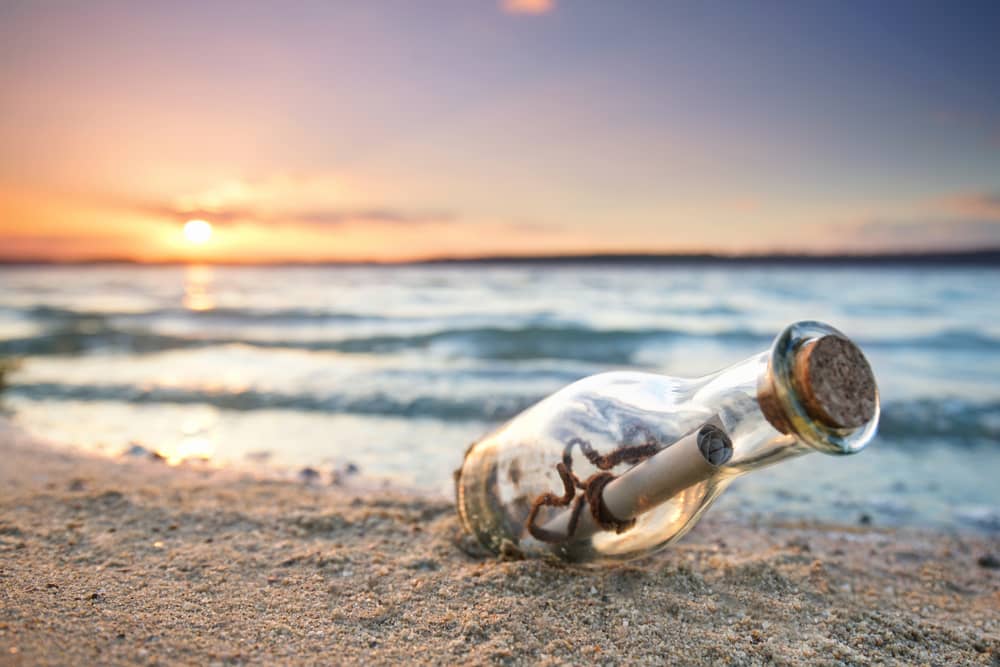

Nigerian Piracy – Have we reached a tipping point?

in tactics as the pirates have upped the ante by taking hostages from laden vessels in numbers not seen before [1]. At the same time, reports have come in that the three crew members of a dredger, the Ambika (taken on 6thJanuary), have been freed after a three-hour gun battle with a naval task force. The latter no doubt stung into action by the fact that four of their colleagues who had been acting as guards on board the Ambika (against the understood protocols laid down by the navy which does not allow armed men on commercial ships) were killed during the original attack by the pirates.
This report looks at where we see things and how these recent events may shape the response to future attacks. Further, we consider the implications for owners and their insurers who undoubtedly will face continued attacks in the coming year
Extended Duration Robberies – Fuel theft
Back in 2011 vessels laden with refined product were targeted and cargoes stolen. The chart [2] below shows that at the time the crude prices were in excess of US$100 per barrel. There is likely to be a direct correlation between the fall in crude prices and the move away from this type of attack. However, this time last year there were two such attacks [3] but there are features of both which suggested that the gangs struggled to sell the stolen product or if they did, that the price they achieved did not cover their costs. At the time, the price of crude was around US$65pb. This price probably represents the absolute threshold for oil theft although higher prices in 2018 did not see a rush back into this type of attack.
With recent events in and around Iran there has been a spike in the cost of crude oil which is now around US$70pb. Further geo-political events may see that yet go higher and the knock-on effect may be that cargo theft becomes a viable alternative to the kidnapping model that dominates in the Gulf of Guinea at the present time. However, it maybe that the gangs in the Delta learned that the benefits of any oil theft fell mainly to the traders and businessmen who backed the gangs. Kidnapping brings much greater rewards to those who carry out the attacks.
Kidnap – Damned lies and statistics
Getting a complete picture of the piratical activity in the Gulf of Guinea is not easy. Anecdotal evidence suggests that there is an element of under reporting of attacks against shipping but how widespread that is impossible to know. It is also difficult to get a complete picture of the response to successful kidnappings and the time and cost of securing the release of captured crew. However, there are some developing trends.
Taking the official figures at face value shows that in 2019 the success rate for attacks against vessels (with laden tankers heading the rankings) is around 1 in 3 in 2018. The odds very much favour a determined group against a vessel transiting the area without an armed escort vessel. Gangs in and around the Niger Delta are fed information about vessel movements which are easily confirmed using online AIS tracking sites. Those vessels that are preventing pirates from boarding are relying in particular on the use of citadels; occasional intervention by local naval forces and embedded security teams provided by the Nigerian Navy. The gangs do not like being on board for a protracted period and have no desire to hijack and hold a vessel and unless they have immediate access to the crew, they leave. An important factor in the success of the citadel is having all crew within it. Stragglers quickly become bargaining chips and compromise the safety of all.
There are broadly three areas where attacks take place: off Bonny, off Benin, and in the wider region for example off Cameroon and Gabon. When one ship is released then activity increases in that area.
The attack on the Ambika (referred to above) takes on added significance because it is a very unusual example of a dedicated armed team losing out to the pirates. Not only were they killed but crew were kidnapped. The old adage that a ship with an armed team would not be hijacked was in this case seriously challenged. It also confirmed that the pirates are capable of high levels of violence. However, this failure may also reflect the poor level of training of those deployed on maritime security duties.
IMB reported in January that the number of crew taken had seen a 50% increase in 2019 over 2018 (121 versus 78)[4]. The 2019 picture has been distorted by the taking of nearly forty hostages in December in only two incidents. In the case of the Dukethat meant only one crew member being left on board a tanker at sea[5]. Taking a six ship rolling-average the number of hostages taken has, as a result of those attacks, moved up to 7.7 crew members kidnapped per attack as at the end of 2019. This is up from 5.25 crew members per attack which is where the corresponding six ship rolling average was in 2016. Those crew members tend to be the senior officers which leaves the owners with an immediate manning problem which has to be sorted before the vessel can trade again.
An equally worrying (albeit predictable) development is that the time taken to resolve the kidnappings has also crept up over the past three years from around 25.5 days in 2016 to 33 days now (again taking a six ship rolling average). That is down from the high point of around 40 days at the end of 2018 which spiked as a result of the Anuket Ambercrew being held 64 days and the Pomerenia Skybeing held for 54 days. This matters. The jungle is not neutral, and the crew are often kept in very primitive conditions [6] and are exposed to the most virulent strains of malaria. Indeed, the owners of the Elka Aristotlefaced the tragedy of losing a kidnapped crew member to sickness after the four crew members taken were not released for 39 days [7]. In other words, as the kidnappings lengthen, so does the direct risk to the crew. Added to that is the breaking news that a crew member from the Dukealso died with the Indian High Commission saying this had happened because of the “adverse conditions” that the crew were held in [8]. Held in the jungle of the Niger Delta comes with very different risks than being held on board a hijacked vessel. But this model of piracy presents challenges to the Nigerian gangs which means that they too have a finite time to reach a deal. They have the direct cost of feeding the hostages as well as the cost of securing them from attack and capture by another gang.
Ransom inflation
Nigerian kidnapping of crew is what Anja Shortland [9] in her recent book on Ransoms, describes as “transnational”. It involves foreign nationals and the incidents are usually resolved outside Nigeria. The kidnappings follow rules and like Somali pirates their Nigerian counterparts understand that “…it is financially rewarding to develop a reputation for the decent treatment of hostages and keeping one’s word”. [10] It means that if a ransom is paid then the crew are released. But negotiating with pirates is an art. As she said in describing the process:
“Bargaining over the price of a hostage is a highly unusual bartering situation. There is a single seller and no close substitute for the hostage…. There are no clear rules or norms to structure the negotiation…. Even without the problem of establishing trust and a cooperative bargaining protocol, price setting is fiendishly complicated. The buyer’s and seller’s reservation prices are private knowledge. Price targets may shift over time….”[11]
One of the unwritten rules of this self-governing regime centres on “ransom discipline”. The morality of paying ransoms and the effect they have on encouraging more attacks is beyond this article and in any event when it comes to paying ransoms in a shipping context that train has long left the station. Ransom discipline, particularly in a local community is important and has its foundations in the classic utilitarian doctrine which provides that it would be better for all if no ransoms were paid at all. But in the context of the vast majority of short term kidnappings taking place in local communities it has “broad social benefits” and these include stabilizing the kidnappers expectations and ensuring that those better off do not put poorer hostages at risk.[12] In shipping, maintaining that sort of discipline has proved very difficult particularly in the Somali context where ransoms rose from around US$300,000 in 2008 to in excess of US$10m by 2012 albeit for large laden tankers. The ability to impose discipline was not helped by the fact that ship owners have a number of insurers that they could possibly call on and ransoms were offset by the fact that often cargo interests were contributing under General Average.
Nigeria hasn’t seen the same rampant inflation because it is only the crew that are ransomed. Some discipline has been maintained by the fact that there is a tacit nod to the numbers taken so that the per capita amount has stayed in a broad band between US$30,000 and US$50,000 per head. The collapse of the Naira against the US$ has meant that there has been much more inflation where ransoms are calculated in local currency. Unlike Somalia, the Nigerians are exposed to more risk of being found by the military or by other gangs. It means that as a gang leader you normally have about a month to maximise the returns. But as expectations rise then it is inevitable that those negotiating will want to spend more time “normalizing” the transaction and that means more time. The significance of the recent kidnapping of 19 and 20 crew is that it sidesteps that. Without the luxury of time, with more attacks being repelled then the obvious answer to maximise returns is to take more people. Even with the rate per head staying the same the amount being paid as a lump sum must increase. However, that brings new challenges not least in looking after the crew. If you can’t do that then, as we set out above, you potentially lose your reputation as a trusted counter-party and the model begins to fall apart.
Conclusion
More crew taken means bigger ransoms but such audacious attacks depriving a vessel of almost its entire crew, brings greater political scrutiny and the Nigerian Navy have been embarrassed by the recent events. It is said that piracy is always solved ashore and Somalis showed that the way to stop attacks is to make it too risky to be a pirate. The commitment of various international navies and of course the presence of armed guards made it much riskier to operate deep into the Indian Ocean. Until the Nigerian law enforcement agencies can change the risk profile (which the recent robust response to the killing of the naval ratings shows is possible) then piracy will continue. There is the impression that piracy at current levels is tolerated and that endemic corruption means that those officials who would otherwise be tasked to lead the fight are persuaded to turn the other way. It will be interesting to see whether the rewards of large crew kidnappings justify the risk /reward balance for the pirates, and this continues. Equally, has a tipping point been reached where the Nigerian Navy are now forced to be seen to confront a situation that is in danger of escalating out of control.
[1]On 3rd December 19 hostages were taken from the VLCC Nave Constellation off Bonny and on 16th December 21 were taken from the Duke off Cotonou
[2]From macrotends.net
[3]The Barret and the Marine Express
[4]https://www.icc-ccs.org/index.php/1286-unprecedented-number-of-crew-kidnappings-in-the-gulf-of-guinea-despite-drop-in-overall-global-numbers
[5]https://insurancemarinenews.com/insurance-marine-news/20-out-of-21-crew-kidnapped-from-products-tanker/
[9]“Kidnap – Inside the Ransom Business” – Oxford University Press 2019
[10] As above p 5
[11]As above p 109
[12]As above p 108


